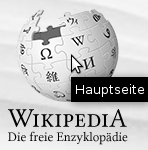Tooltip
A tooltip is a small pop-up window in application programs or websites . It shows a description of an element of the graphical user interface .
Alternative names under Windows are Quickinfo ('Schnellinfo', 'Schnellinfo') and, in general, Mouse Over , as the tooltip appears when the mouse pointer remains motionless over the corresponding element for a short time ( hover , 'floats'; German meaning roughly' Hover text ').
Tooltips have their origin in the Balloon Help and are often used to explain buttons in the toolbar , and in web browsers to briefly describe a photo or link destination. Usually a few words appear in small, colored font. However, a larger element may appear that also contains buttons or links.
Tooltips can contain additional information about the associated element that is otherwise not visible; however, they can also show the text that the element itself contains. This is useful, for example, with a table cell that contains more text than can be displayed in the available space.
Tooltips in web browsers
In the text-based markup language HTML, there are various options for using tooltips, for example through the titleattribute that specifies meta information about the element. The appearance of the tooltip is determined by the browser and can therefore differ greatly from browser to browser. Your own implementation of tooltips, e.g. B. with the help of JavaScript , is associated with higher technical effort, but allows full design freedom and consistency on all platforms, if the accessibility is lost .
Balloon tip
A Balloon Tip (English for balloon tip , alternatively also tooltip , and Info icon ) is an element of the Windows interface since Windows 2000 , which is primarily in the Notification Area (system tray, "Systray") appears and status messages of active processes contains. This behavior is controlled by the registry entry EnableBalloonTips. However, it can also be displayed like a normal tooltip for a control element of a window in order to display additional information or to point out the element.
Individual evidence
- ↑ Ringo Hapke: Principles of dialogue design . (PDF; 428 kB). University of Technology, Economics and Culture (FH), Leipzig 2005
- ↑ Universal attributes in the SELFHTML Wiki
- ↑ Disabling info icons in the notification area in Windows XP or Vista . Microsoft Help and Support, February 26, 2010
